This article was co-authored by Laura Marusinec, MD. Dr. Marusinec is a board certified Pediatrician at the Children's Hospital of Wisconsin, where she is on the Clinical Practice Council. She received her M.D. from the Medical College of Wisconsin School of Medicine in 1995 and completed her residency at the Medical College of Wisconsin in Pediatrics in 1998. She is a member of the American Medical Writers Association and the Society for Pediatric Urgent Care.
There are 15 references cited in this article, which can be found at the bottom of the page.
wikiHow marks an article as reader-approved once it receives enough positive feedback. In this case, several readers have written to tell us that this article was helpful to them, earning it our reader-approved status.
This article has been viewed 446,503 times.
Low grade fevers are not harmful to children and may boost immunity when allowed to run their course. When a child's body temperature exceeds 38.9 °C (102 °F), the child is usually uncomfortable, and you should take action to reduce the fever.[1]
Steps
Bringing Down Your Child’s Body Temperature
-
1Give your child the proper medication. Administer a dose of children's acetaminophen or ibuprofen.[2]
- The Mayo Clinic says to only use fever-reducing medications when the fever is above 38.9 °C (102 °F). Most pediatricians recommend treating a fever above 38.9 °C (102 °F), or if the child is uncomfortable with any degree of fever.
- Both acetaminophen and ibuprofen products are available over the counter and are effective at reducing fever. It is safe to give acetaminophen to children who are over 2 months old, and it is safe to give ibuprofen to children who are more than 6 months old. Refer to the dosing guide on the product package or ask your doctor or pharmacist to measure an appropriate dose based on a child's weight.[3]
- Acetaminophen will keep the fever down for four to six hours, and ibuprofen will lower the fever for six to eight hours.[4]
-
2Use only one type of fever reduction medication. Do not alternate doses of acetaminophen and ibuprofen unless instructed to by a physician. This method may be used in rare cases when the fever is above 40 °C (104 °F) and does not decrease after administering one type of medication.[5]Advertisement
-
3Cool your child off with water. Sponge the child in lukewarm water if the temperature remains above 40 °C (104 °F) 30 minutes after you have administered medication.[6]
- Sit the child in 51 cm (2 inches) of water that is 29 to 32 °C (85 to 90 °F). Use a sponge or washcloth to continuously moisten his bare skin.[7]
- Shivering will cause the child’s body temperature to rise, so slightly increase the water temperature if necessary.
- Alternatively, you can apply a lukewarm, wet cloth on forehead, hands, and feet to reduce the temperature.[8]
-
4Keep your child well hydrated. Keep children hydrated with water, juice, popsicles, clear broth or drinks containing electrolytes that are intended to rehydrate the body.[9]
- Have the child take small sips of water every 15 to 20 minutes.
- Juice and sports drinks, like Gatorade or Powerade, are not recommended for infants under one year old, as they don't provide the proper balance of electrolytes in young children.
- Pedialyte, or other electrolyte replacement drinks designed for children, are ideal for ensuring proper hydration.
-
5Make sure your child rests. When combatting a fever, it is of the utmost importance that your child gets plenty of rest.[10]
Making Your Child Comfortable
-
1
-
2Keep the ambient temperature low. Lower the thermostat so the room temperature is slightly cooler than usual. Keep a fan close, if necessary, to keep your child cool.[13]
- You can also open the windows if it is not too cold outside. Generally, anything below 20°C (68°F) outside would be too cold for a child with a fever.[14]
-
3Provide support for the head. When your child is awake, make sure he or she has a comfortable, supportive pillow to rest his or her head on.
-
4Keep your child in one place. Extra or unnecessary movement will raise the body temperature in your child, so be sure they rest in one place and bring them what they need. Never allow your child to engage in strenuous activities when he or she is running a fever.[15]
-
5Monitor the fever with a thermometer. You should know whether a fever is going up or down, or if it is staying steady. Check your child’s temperature often and make sure you are following the proper instructions for thermometer use.[16]
- Never use an oral thermometer on a child who has just drank or eaten something cold. This can skew the results the thermometer gives you.[17]
- Rectal thermometers provide the most accurate results, especially for children under one year old, but are uncomfortable for the child and are more difficult for you to use when trying to get a proper reading.[18]
-
6Treat other symptoms, when necessary. Most children who are running a fever will show other symptoms of illness, such as a stuffy or runny nose, sneezing, a headache, an upset stomach, or other physical symptoms. Use safe and effective measures to treat those other symptoms, as they can prevent your child from resting comfortably, which will ultimately help in reducing the fever.
Recognizing and Treating High Grade Fever
-
1Know when to contact your doctor. If your child is younger than 3 months old, contact the child's pediatrician any time there is a fever above 38 °C (100.4 °F). For children older than 3 months with a fever under 40 °C (104 °F), you should call your doctor if the fever lasts more than two to three days.[19]
- In these cases, your doctor should know whether or not your child needs to be monitored by medical professionals or if you can continue to treat the fever at home.
-
2Seek medical intervention. Immediately contact a physician or emergency services if a child has a fever above 40.6 °C (105 °F), no matter the age.[20]
-
3Know when to call an ambulance. When your child is running a fever of 40.5 °C (105 °F) or above and starts having seizures or other neurological symptoms, is very lethargic, dehydrated, or if the fever is due to heat exhaustion, you should call an ambulance for immediate assistance.
- If the child has a temperature of 40.5 °C (105 °F), medical attention is necessary. Take your child to the doctor for assistance.
-
4Cool your child with lukewarm water. Apply lukewarm or room temperature water with a sponge or cloth to your child’s head, neck, armpits, and wrists if his or her temperature is at or exceeds 40.5 °C (105 °F). This will provide a temporary reduction in body temperature.[21] [22]
- Give your child acetaminophen or ibuprofen right away to start bringing down the fever.
-
5Follow your doctor’s instructions. After a doctor or medical professional has reduced your child’s fever, he or she will provide you with monitoring and treatment options for the future. Follow your doctor’s instructions closely to prevent another onset of dangerously high fever.[23]
-
6Bring your child back for a follow-up visit. Even if your child’s high-grade fever has seemingly been eliminated, it is critical you bring the child back for future follow-ups and visits with the doctor. This will help to eliminate any dangerous or potentially life-threatening complications in the future.[24]
Warnings
- Never give a child aspirin to reduce fever, as it can cause a fatal disease called Reye's syndrome.⧼thumbs_response⧽
- Contact a child's pediatrician any time there is a fever above 38 °C (100.4 °F), if younger than 3 months old. Immediately contact a physician or emergency services if a child has a fever above 40.5 °C (105 °F), no matter the age.⧼thumbs_response⧽
- Call for emergency medical services if your child has a seizure with a fever (febrile seizure) for more than five minutes.⧼thumbs_response⧽
References
- ↑ https://kidshealth.org/en/parents/fever.html
- ↑ https://www.stanfordchildrens.org/en/topic/default?id=fever-in-children-90-P02512
- ↑ https://www.aboutkidshealth.ca/article?contentid=3260&language=english
- ↑ https://www.aboutkidshealth.ca/article?contentid=3260&language=english
- ↑ https://www.aboutkidshealth.ca/article?contentid=3260&language=english
- ↑ https://www.nationwidechildrens.org/conditions/fever
- ↑ https://www.nationwidechildrens.org/conditions/fever
- ↑ https://www.nationwidechildrens.org/conditions/headaches-in-children
- ↑ https://www.uhhospitals.org/Healthy-at-UH/articles/2015/03/the-dos-and-donts-of-treating-fevers-in-children
- ↑ https://kidshealth.org/en/parents/fever-sheet.html
- ↑ https://kidshealth.org/en/parents/fever-sheet.html
- ↑ https://medlineplus.gov/ency/patientinstructions/000319.htm
- ↑ https://medlineplus.gov/ency/patientinstructions/000319.htm
- ↑ https://www.ncbi.nlm.nih.gov/books/NBK279453/
- ↑ https://medlineplus.gov/ency/article/003090.htm
- ↑ https://kidshealth.org/en/parents/take-temperature.html
- ↑ https://kidshealth.org/en/parents/take-temperature.html
- ↑ https://kidshealth.org/en/parents/take-temperature.html
- ↑ https://health.clevelandclinic.org/kids-fevers-when-to-worry-when-to-relax/
- ↑ https://health.clevelandclinic.org/kids-fevers-when-to-worry-when-to-relax/
- ↑ https://www.nlm.nih.gov/medlineplus/ency/patientinstructions/000319.htm
- ↑ http://kidshealth.org/PageManager.jsp?lic=1&ps=107&cat_id=189&article_set=21648
- ↑ http://www.mayoclinic.org/diseases-conditions/fever/in-depth/fever/art-20050997
- ↑ http://www.mayoclinic.org/diseases-conditions/fever/in-depth/fever/art-20050997
About This Article
For children, the quickest way to reduce a fever is to give them a dose of children's acetaminophen or ibuprofen if their temperature is over 102 degrees Fahrenheit. Make sure to give your child only 1 type of medication, unless your doctor tells you otherwise. If the fever persists, give them a bath in lukewarm water. However, avoid suing cold water as this could make them shiver, which will increase their temperature. Additionally, dress them in lightweight clothing and cover them with a thin blanket, since heavy clothing and blankets prevent the body from cooling itself. For more tips from our Medical co-author, including how to keep your child hydrated during a high fever, keep reading!
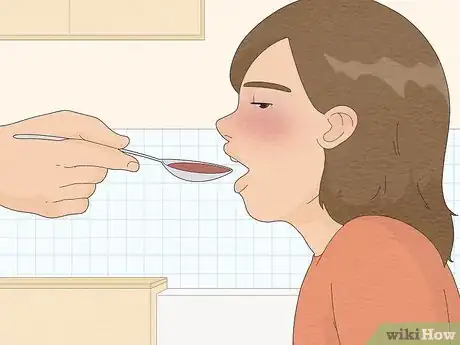
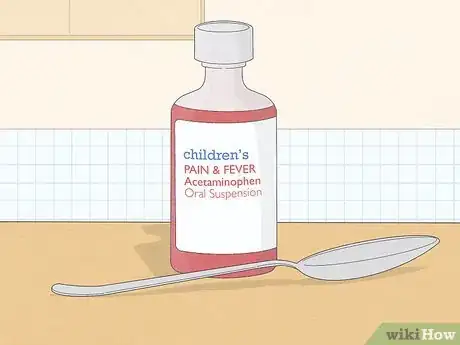
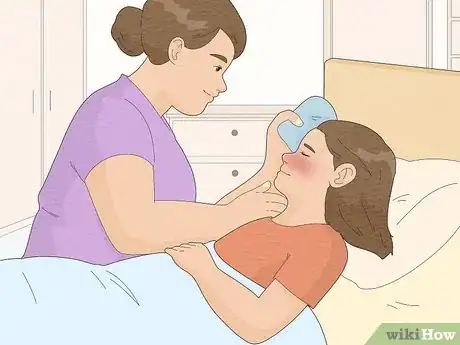
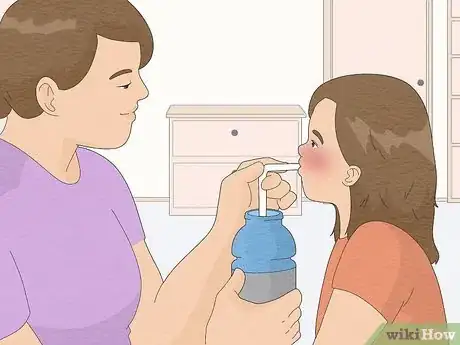
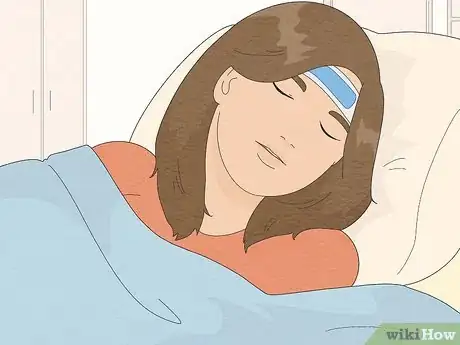
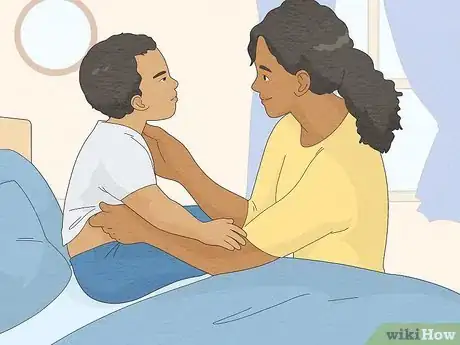
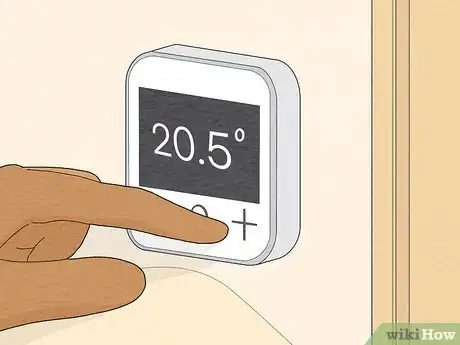
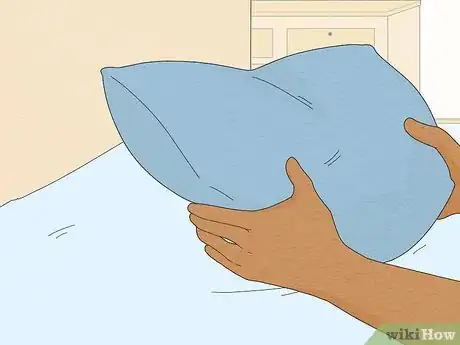

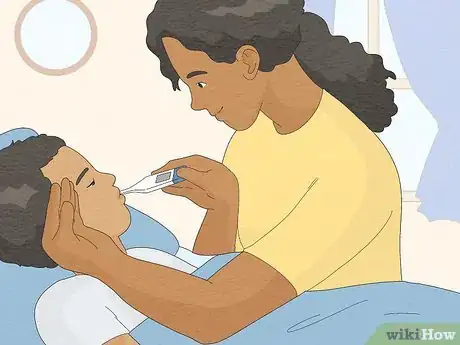
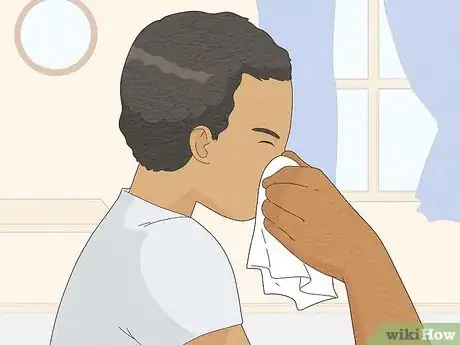


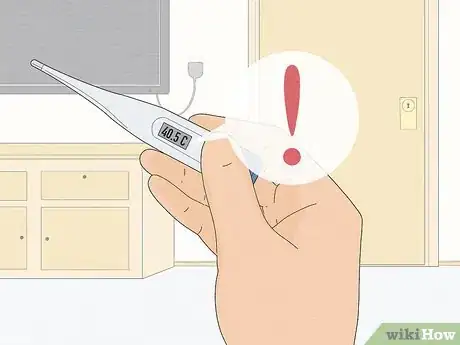

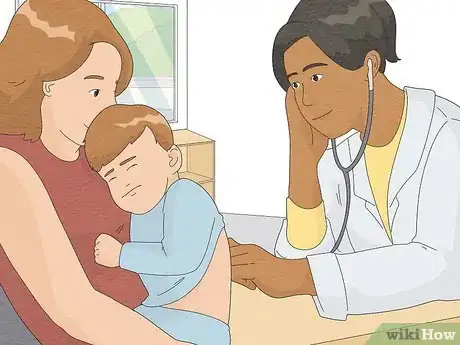
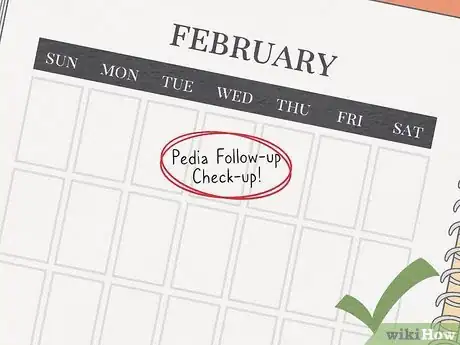

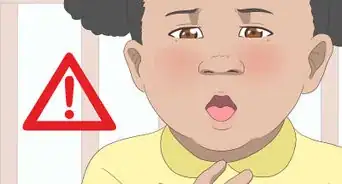
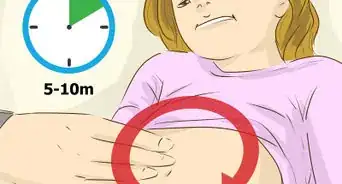
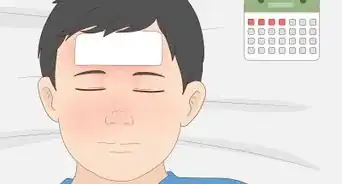
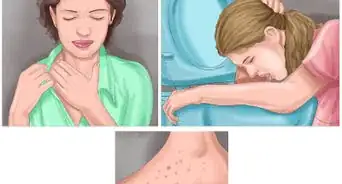

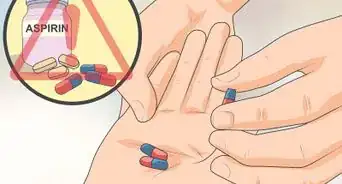
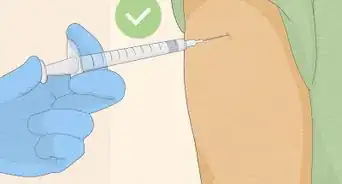
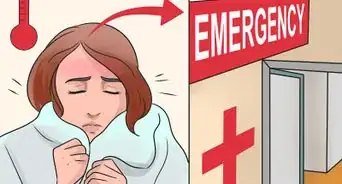


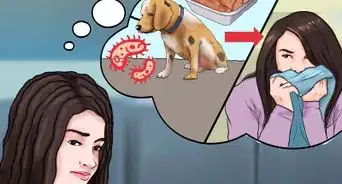
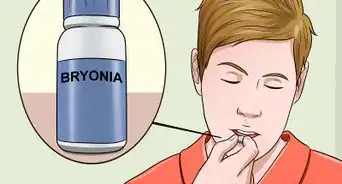
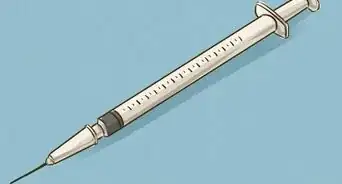













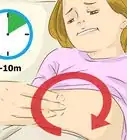
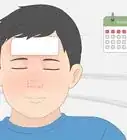



































Medical Disclaimer
The content of this article is not intended to be a substitute for professional medical advice, examination, diagnosis, or treatment. You should always contact your doctor or other qualified healthcare professional before starting, changing, or stopping any kind of health treatment.
Read More...